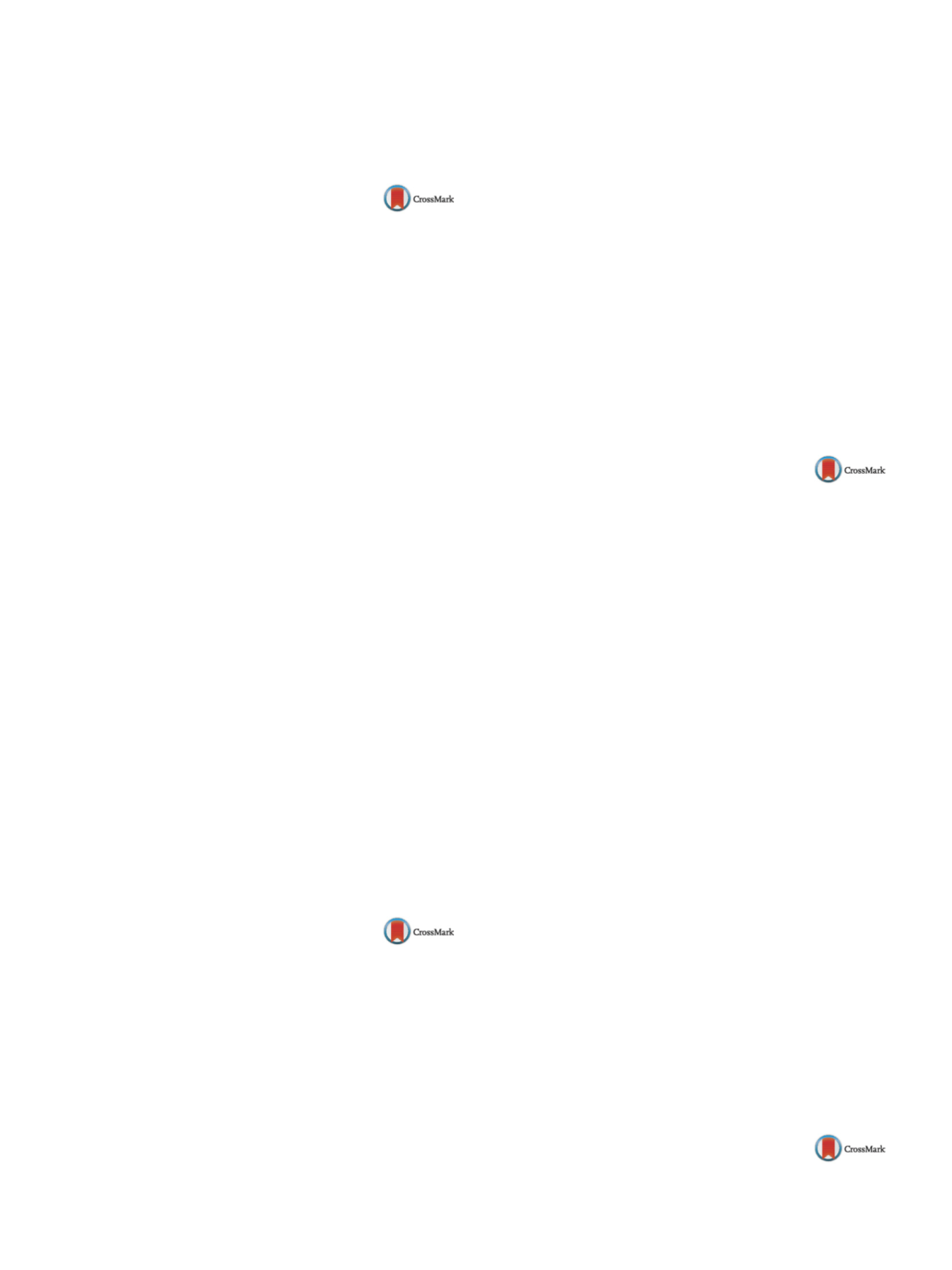

S304
25th European Congress of Psychiatry / European Psychiatry 41S (2017) S303–S364
Disclosure of interest
The authors have not supplied their decla-
ration of competing interest.
http://dx.doi.org/10.1016/j.eurpsy.2017.02.191EW0578
Outcomes in a group of 7–8-year-old
children in a developmental-based
intervention in autism spectrum
disorder
M.T. Sindelar
1 ,∗
, N. Furland
21
Universidad Sudoeste, CS Humanas, Bahia Blanca, Argentina
2
National center of research, Conicet, Biology, Bahia Blanca,
Argentina
∗
Corresponding author.
Healthy parent-child interaction is essential for child development.
Parents play a central role in the acquisition of social and communi-
cative skills, both in typical and atypical children. Increased support
for parent-mediated intervention in autism has been demonstra-
ted. Developmental approaches for ASD are based in establishing
strong interpersonal relationships through natural play to foster
developmental capacities. This work reports outcomes from an
intensive approach based on a developmental, individual diffe-
rence, home-based intervention programwith childrenwith severe
ASD. Parents were trained with DIR approach by a specialist. An
individual intensive rehabilitation program was set up for each
child and implemented at school, home and rehabilitation cen-
ter. The intervention program also focused on semi-structured
activities to promote problem solving, and meliorate sensory
dysfunction. Standardized scales were administered pre– and post-
intervention, with ABC). The Childhood AutismRating Scale (CARS),
the Social CommunicationQuestionnaire (SCQ) andVinelandAdap-
tive Behaviours Scales.
Results
Before initiating the intervention all children presen-
ted severe difficulties in communication, social interaction, lack
of language, and gestures of communication, auto– and hetero-
aggressive behaviors. After 6months, children showed significant
changes inmean scores for emotional functioning, communication,
and daily living skills and diminution of aggressive behaviors. The
present results provide strong support for the effectiveness of a
developmental-based intervention, specifically in the domains of
social skills behavior, social responsiveness, in a group of children
with severe autism. These results highlight the positive effects of
a rehabilitative approach that works in harmony with the family,
school and professional team.
Disclosure of interest
The authors have not supplied their decla-
ration of competing interest.
http://dx.doi.org/10.1016/j.eurpsy.2017.02.192EW0579
Music as a helpful instrument in the
treatment of children with Asd in
their school inclusion program
M.T. Sindelar
1 ,∗
, C . Meini
21
Universidad Sudoeste, CS Humanas, Bahia Blanca, Argentina
2
Universita Vercelli, Lingua, Vercelli, Italy
∗
Corresponding author.
Since birth infants are active and communicative partners engaged
in protoconversations with caretakers. Motherese, the simplified
language adults spontaneously use with infants, has a musical
structure. We believe that for developmental and evolutionistic
reasons music is a preferential tool to favor communication and to
promote group identity. We carried on a musical experience with
a group of autistic (ASD) children aged 5 to 7 years. Each child par-
ticipated at their school with 10 typically developed classmates
and their teachers. Our ASD children love music and enjoy playing
and singing. With music, they overcome some communicative and
social difficulties. Their bodily posture changed with music, facili-
tating joint attention and improvement of verbal language. When
singing children learned linguistic skills, they ameliorated vowels’
pronunciation and understood how a question and an answer differ
in melodic contour. Taking into account the unique sensory motor
profile of each ASD child, we proposed rhythmic music with high
proprioceptive input (for under-reactive children) and smooth and
calming music for avoidant and easily overwhelming children in
order to ameliorate intentionality and enlarge circles of communi-
cation. A combination of semistructured and spontaneous activity
is the main components of our approach, which has both thera-
peutic and educational impacts. In the musical group, all the ASDs
appeared to be more attentive, motivated, better performing and
able to teach their acquired skills to their peers. Typical peers inter-
act more with children with ASD with music. We consider this very
helpful in the inclusion of ASD children in a school setting.
Disclosure of interest
The authors have not supplied their decla-
ration of competing interest.
http://dx.doi.org/10.1016/j.eurpsy.2017.02.193EW0580
Impulsivity and current alcohol use in
adolescents
N. Smaoui , N. Charfi
∗
, M. Turki , M. Maâlej-Bouali , J. Ben Thabet ,
N. Zouari , L. Zouari , M. Maâlej
Hedi Chaker university hospital, department of psychiatry C, Hedi
Chaker university hospital, Sfax, Tunisia
∗
Corresponding author.
Introduction
Many studies have focused on the strong link bet-
ween impulsivity and addictive behaviors, such as alcohol use
disorders.
Objective
Our study aimed to investigate the links between alco-
hol use and impulsivity in a sample of Tunisian pupils.
Methods
This was a cross-sectional study conducted in May
and June 2016. It enrolled 317 pupils from four colleges and
schools in Sfax (Tunisia). The participants were asked to answer
a self-administered questionnaire, after their consent. Alcohol use
disorders identification test (AUDIT) was used to evaluate alcohol
dependence. The Barratt Impulsiveness Scale (BIS), in its 11th ver-
sion, was used to assess impulsivity trait. Its three second-order
factors were attentional impulsiveness, motor impulsiveness, and
non-planning impulsiveness.
Results
The mean age was 16 years with a sex-ratio of 1.07. The
school children reported having drunk alcohol at least once in 18.9%
of cases and 41.66% of them still consume. According to AUDIT,
1.6% of alcohol users presented an alcohol misuse and 21.6% pre-
sented dependence. According to BIS, impulsivity prevalence (IP)
in the whole sample was 27.8% while it was 40% among the alco-
holic participants versus 24.9% in non-alcoholic participants. The
average BIS score was more important in the alcoholic participants
(69.25 versus 65.53;
P
= 0.011). Alcohol consumption was correla-
ted to attentional impulsiveness (
P
= 0.01) andmotor impulsiveness
(
P
= 0.008). Alcohol dependence was correlated to motor impulsi-
veness (
P
= 0.018).
Conclusion
These results show the importance of clinically eva-
luating and intervening on impulsive personality traits to better
prevent addictive behavior such as alcoholism among adolescents.
Disclosure of interest
The authors have not supplied their decla-
ration of competing interest.
http://dx.doi.org/10.1016/j.eurpsy.2017.02.194EW0581
Influence of peers drinking and
parental drinking and attitudes on
adolescent drinking


















